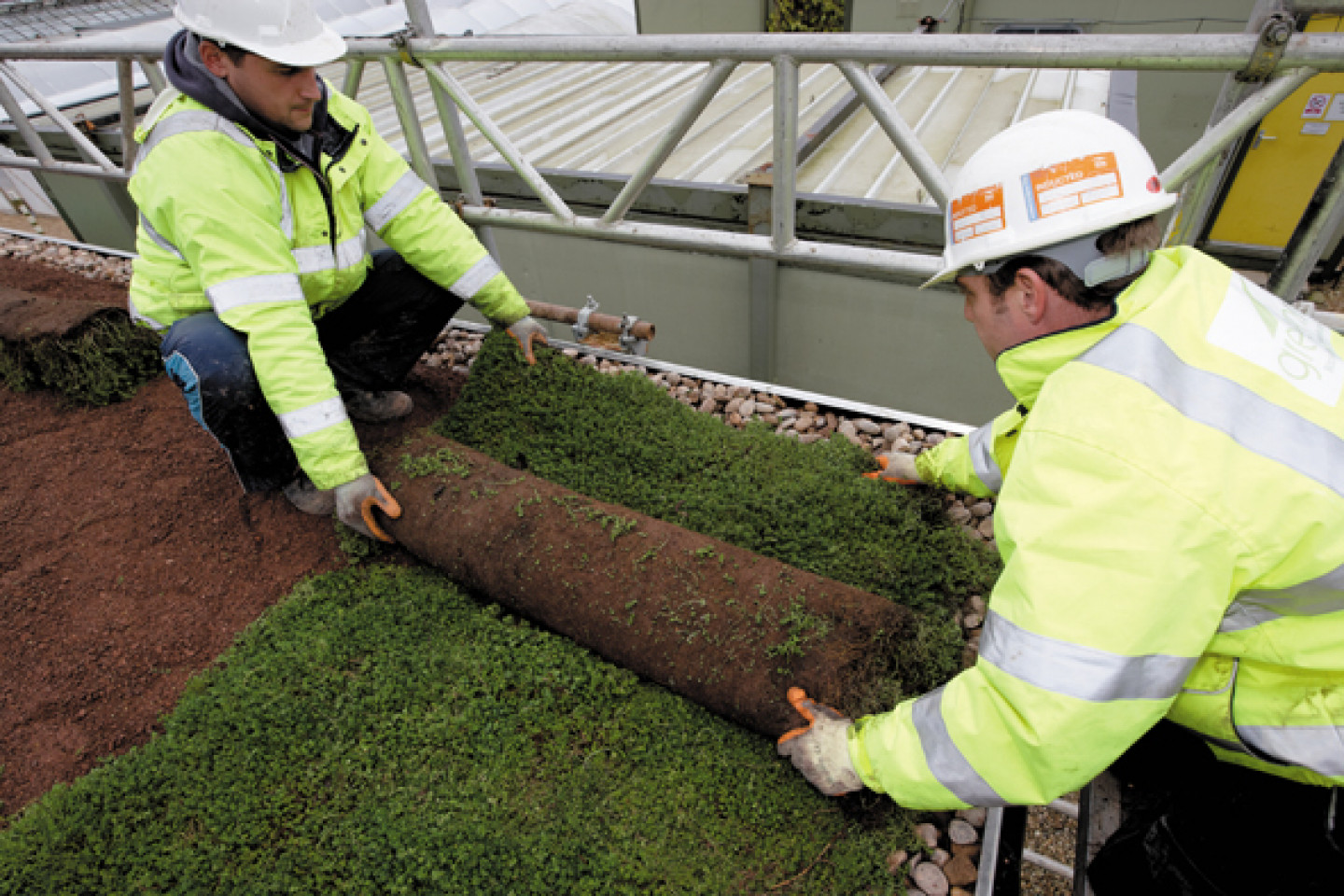At SIG Design & Technology we love using Green Roofs on our projects. They look great and have so many benefits both for a project itself and the wider community. However we often need to make the case in a structured way, so we thought it would be useful to share some thoughts to assist you to do the same.
Here are our thirteen green roof benefits, split into economic, social and environmental reasons, for you to share, along with an explanation about each of the benefits.
1. Green Roofing has Thermal Benefits
The thermal mass of a green roof provides additional thermal benefits over and above the roof insulation. The thermal mass will deliver additional insulation value in winter and summer, thereby reducing heating and cooling (air conditioning) costs.
Numerous worldwide studies demonstrate the actual benefits but due to continued variations in moisture content levels throughout the year, it is currently not possible to include these benefits in thermal calculations.
2. Green Roofing has Acoustic Benefits
The mass a green roof provides above the roofing system provides acoustic properties to the building, reducing transfer of noise pollution into or out of the building and eradicating ‘drumming’ during rainfall.
In addition the planting will reduce the passage of airborne noise, which, as noise travels in straight lines, is broken by the variable heights and mass of the plants.
3. Green Roofing can increase the Lifespan of Waterproofing
A green roof prevents the waterproofing material being degraded by UV light and stabilises the temperature of the waterproofing, avoiding the thermal processes (expansion and contraction) that contribute to waterproofing failure.
As a general rule of thumb the addition of a green roof to a suitable waterproofing material will double the life of the waterproofing: avoiding the cost and disruption of replacement and reducing whole life costs.
4. Green Roofs can improve Sustainability ratings
A green roof can make a significant contribution to the points scored in a BREEAM or Code for Sustainable Home assessment. Points can be accrued under a variety of headings including POL5, LE4, LE5, LE6 to name but a few.
5. Green Roofs can help you obtain Planning Permission
With increasing constraint demand for green roofs being part of planning legislation, Local Authority planning departments are looking favourably at developments that include a green roof.
The UK is yet to reach the position of some European Countries – some German regions allow for an increased building footprint and Basel in Switzerland requires green roofs on all new construction. Green roofs are required within the London Plan and in other regional planning guidelines.
6. Green Roofs create Amenity Space
Due to the ever increasing density of city populations demand for extra outdoor spaces is on the rise. Green Roofs provide amenity solutions that can be used on new and refurbishment projects including:
o Sports facilities such as football, tennis or running courts.
o Social areas such as lawns, decks and terraces.
o Relaxing areas that benefit mental well-being and relaxation.
7. Green Roofs can produce Food
Green roofs can be used to provide areas to grow food, similar to an allotment, thereby reducing the ecological footprint of an urban area and supporting local sustainable produce production.
8. Green Roofs look Beautiful
Green roofs visibly change the roofscape of the built environment, taking away dark coloured roof surfaces and replacing them with natural colours that change with the seasons: greens, reds, browns etc. This replacement of the ‘concrete jungle’ with a vista that replicates nature has significant visual, environmental and health benefits and can help blend a building into its natural environment, particularly in rural settings.
9. Green Roofs can Reduce Air Pollution
Air pollution in cities is said to contribute to a great many premature deaths in the UK annually. The plant matter on a green roof helps filtrate pollutants, absorb carbon dioxide and transfer moisture vapour back into the atmosphere, just as the rainforests are seen as the lungs of the world.
10. Green Roofs can Reduce the Urban Heat Island Effect
The Albedo or Urban Heat Island affect is the phenomena by which cities are typically 3°c hotter than the outlying areas, principally due to the vegetation being replaced by hard surfaces such as roads, pavements and roofs. Green roofs provide a means to re-vegetate city and urban areas thereby reducing temperatures and improving air quality.
11. Green Roofs Capture Carbon
Established plants capture and store carbon dioxide. Studies in the USA indicate that once established 50m² of extensive sedum green roof will capture roughly the same amount of carbon as a broad leaf tree.
12. Green Roofs can Mitigate Flood Risk
Green roofs both detain and retain rainfall (precipitation) at the point of impact, mitigating flood risk by reducing water loads on drainage systems (SuDS). Quality of water runoff is also improved by the removal of heavy metals and pollutants, bringing benefit to rivers and watercourses.
13. Green Roofs can contribute to Biodiversity
Green roofs can be designed specifically to replicate specific ground conditions, replacing habitat lost through the construction process and improving site ecology. Through careful design they can replace lost habitat for flora and fauna, meet specific Biodiversity Action Plan (BAP) requirements for invertebrates, Bird and Bat species and/or create niche habitats that can support the preservation of rare species.
SIG Design & Technology takes the risk out of roof design, offering a genuinely independent choice of waterproofing for flat, green, zinc and copper roofs. Designs are covered by our PI insurance and we’re part of SIG plc, a FTSE250 company. Our blog at www.singleply.co.uk/blog explores some of your common problems in roof design and system choice, or book our new RIBA CPDs, ‘A Structured Approach to Roof Specification & Design’ and ‘Specifying Hard Metals: Choosing the Right Product for the Project’.

